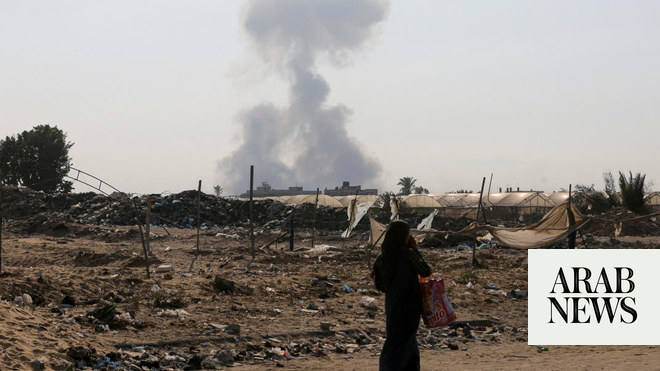Ancient Christian monastery in Gaza placed on 'dangerous' list at UNESCO meeting in India
NEW DELHI: An ancient Christian monastery in Gaza was named a world heritage site in danger during a UNESCO conference in New Delhi on Friday.
The monastery, founded around 340 AD by Saint Hilarion, is part of Tell Umm Amer, an archaeological site located in the Nuseirat refugee camp in Gaza's Deir Al-Balah governorate.
It was nominated for inscription by the Permanent Mission of Palestine to UNESCO in 2012 and was taken up with urgency during the annual session of the World Heritage Committee.
Ambassador Munir Anastas, Permanent Representative of Palestine to the United Nations Office for Culture, welcomed the inscription as a source of hope for Gaza residents after the ongoing Israeli offensive, which since October has killed at least 40,000 people and destroyed much of the Palestinian territory's infrastructure.
“It is a message of hope for our people in the Gaza Strip who are fleeing the bombardment, with no shelter, no water, no food. However, they are determined to protect their heritage because it is part of the memory and history of our people,” Anastas told Arab News on the sidelines of the UNESCO conference.
The move was proposed by Belgium and supported by 18 other members of the World Heritage Committee, which used the emergency procedures provided for in the World Heritage Convention and agreed to inscribe the Saint-Hilarion Monastery complex on the World Heritage List and the World Heritage in Danger.
Under the terms of the Convention, the 195 States Parties, including Israel, are prohibited from directly or indirectly destroying such sites and are committed to cooperating in protecting them.
“When a site is inscribed on the World Heritage List in a state of risk, it means that all states parties to the convention will be responsible for protecting and promoting it,” Munir said.
“And this is another powerful message from the international community to our people in the Gaza Strip, to tell them that the international community has not forgotten you.”
Saint Hilarion was a native of Gaza and is considered the father of Palestinian monasticism. His monastery was an important station at the crossroads of Egypt, Palestine, Syria and Mesopotamia and is associated with the emergence of desert monastic centers during the Byzantine period. It is also evidence of Christianity in Gaza.
This monastery is one of the oldest in the Middle East and consists of two churches, a burial place, a baptismal chamber, a public cemetery, a meeting hall and a dining hall.
Of the 320 total, at least 207 archaeological sites and buildings of cultural and historical significance have been reduced to rubble or severely damaged by Israeli bombardment of the Gaza Strip over the past 10 months.
These include the Orthodox Church of St. Porphyrios, the third oldest church in the world, the 12th-century Omari Mosque and the nearby medieval Al-Qissariya Old City Market, the ancient port of Gaza dating back to 800 BC, and Philistine necropolis dating back to the Late Bronze Age, 1550-1200 BC.
The destruction of several archaeological sites was detailed in South Africa's case against Israel for genocide at the International Court of Justice. The case argued that the massacres and destruction of cultural heritage in Gaza showed the Israeli leadership's intent to destroy the Palestinian people and their cultural identity.
